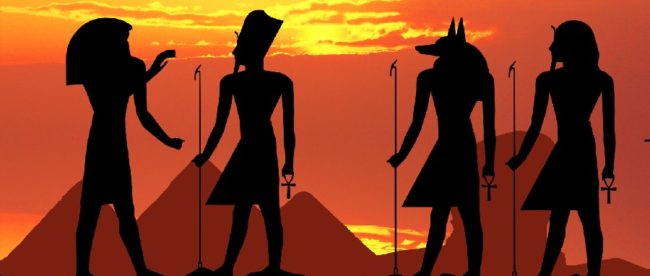Shemshemset or Marijuana in Ancient Egypt
Marijuana’s Egyptian Connection – Medicinal, Mythological, or Mythical?
I am a huge fan of Wilbur Smith’s Egyptian series. The protagonist of this series is a eunuch called Taita. Taita is a doctor, a master-strategist, an architect, a weapon designer, a magician – all rolled into one. The series is a work of fiction, but it presents a vivid picture of the way of life c.1700 B.C. (the time the Hyksos are said to have invaded Egypt.) While reading Warlock, I stumbled upon this passage:
“Taita took him by the shoulders and stared into his black eyes. He saw that they were slightly unfocussed as though he had been smoking the bhang weed. ‘The Mede has penetrated your armor,’ he said, and placed the Periapt on Bay’s forehead.”
In rest of the Egyptian mythology series, Taita never administers anything made of Marijuana to anyone – not as a pain-reliever, nor as a recreational drug. He does use the draught of the sleeping flower (also known as the red shepnn – or opium,) to relieve his patients of their pain during surgery.
While strikes me as odd is that Taita should use the Indian term bhang for Marijuana while referring to the weed, it’s entirely feasible that Egypt and India were trading Marijuana at the time of the Old Kingdom.
After all, by 2400 BC, they were already exporting Lapis Lazuli to Harappa and Indus Valley (now Pakistan and India.) Lothal, the oldest harbor known in the world was situated on the shores of India, and around this time, it was already in business. It is not impossible then that Marijuana was brought back by way of trade from Central and South Asia.
So can we imagine a group of Egyptian nobles sprawled upon their cushions, passing around a chillum filled with charas?
Can we be sure that the medicine man of ancient Egypt used marijuana to treat diseases?
Can we confirm that the evolved Egyptian used marijuana to connect with the Egyptian gods by ascending to a higher plane of consciousness?
While there are texts (scrolls and tablets) that mention Shemshemset (a hieroglyph that the Egyptians used for marijuana) in medicinal contexts, there’s no definite proof that the general populace of Ancient Egypt had any recreational use for cannabis. Oddly, shemshemset’s medical-mentions too disappear around 2000 years ago. The most quoted reference for the use of shemshemset in Egypt is the Ebers Papyrus that lists its use in treating different maladies.
And yet, only because not much has been written about it, there are two reasons why we cannot conclude that Ancient Egypt had remained untouched by marijuana.
- “Writing” wasn’t easy in the days of the yore. For preservation hieroglyphs had to be chiseled on stone tablets – not an easy task! Step back in time and try to remember your experience of chiseling your sweetheart’s name on a rock. Can you imagine chiseling in a whole love-letter? And now visualize chiseling in a long and boring chapter on the use of shemshemset!
- Easier than chiseling on stone, was writing on papyrus scrolls. If painstakingly written hieroglyphic rolls of papyri were produced on the topic, they would definitely have found their way into the library in Alexandria (the largest library in the world at the time.) Unfortunately the library was first burned down in 47 AD (thanks to Caesar) and then again in 640 AD (by the Muslim ruler Caliph Omar.)
For the above two reasons we may not be able to find enough to help us substantiate a recreational use of marijuana, but then can we refute what is cast in stone and confirmed by a goddess?
Seshat is the Egyptian goddess of wisdom, knowledge, and writing. This is what she looks like.
A question that has been asked both by the historians and the marijuana-lovers is – “What is that on her head?” While there’s no clear answer to this question – but even to the untrained eye it looks like a cannabis leaf. After all, if any herb should be associated with wisdom, knowledge, and creativity; it must be cannabis. This connection is also strengthened by the fact that Seshat was the goddess of the knowledge and in the ancient world, hemp was used to make non-stretchable ropes for taking measurements. (Read more about it here.)
Ancient Egypt’s connection with marijuana was anything but mythical.


